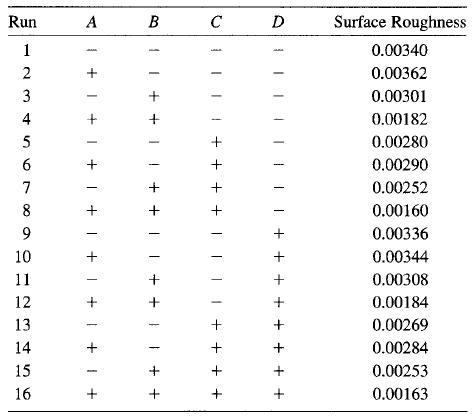An engineer has performed an experiment to study the effect of four factors on the surface roughness
Question:
An engineer has performed an experiment to study the effect of four factors on the surface roughness of a machined part. The factors (and their levels) are A = tool angle (12, 15°). B = cutting fluid viscosity (300, 400), C = feed rate (10, 15 in/min), and D = cutting fluid cooler used (no, yes). The data from this experiment (with the factors coded to the usual -1, +1 levels) are shown below.

(a) Estimate the factor effects. Plot the effect estimates on a normal probability plot and select a tentative model.
(b) Fit the model identified in part (a) and analyze the residuals. Is there any indication of model inadequacy?
(c) Repeat the analysis from parts (a) and (b) using 1/y as the response variable. Is there an indication that the transformation has been useful?
(d) Fit a model in terms of the coded variables that can be used to predict the surface roughness. Convert this prediction equation into a model in the natural variables.
Step by Step Answer:






